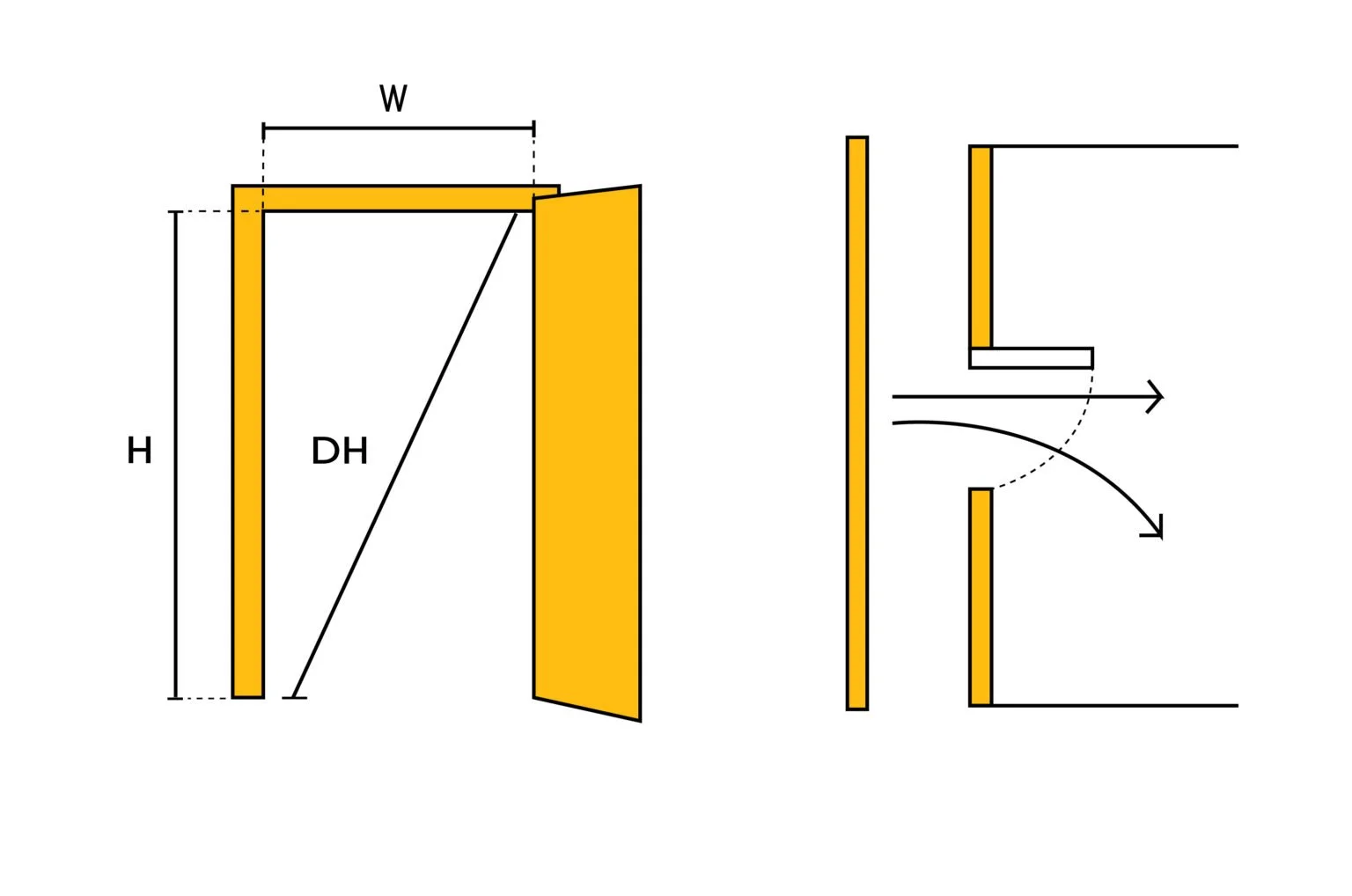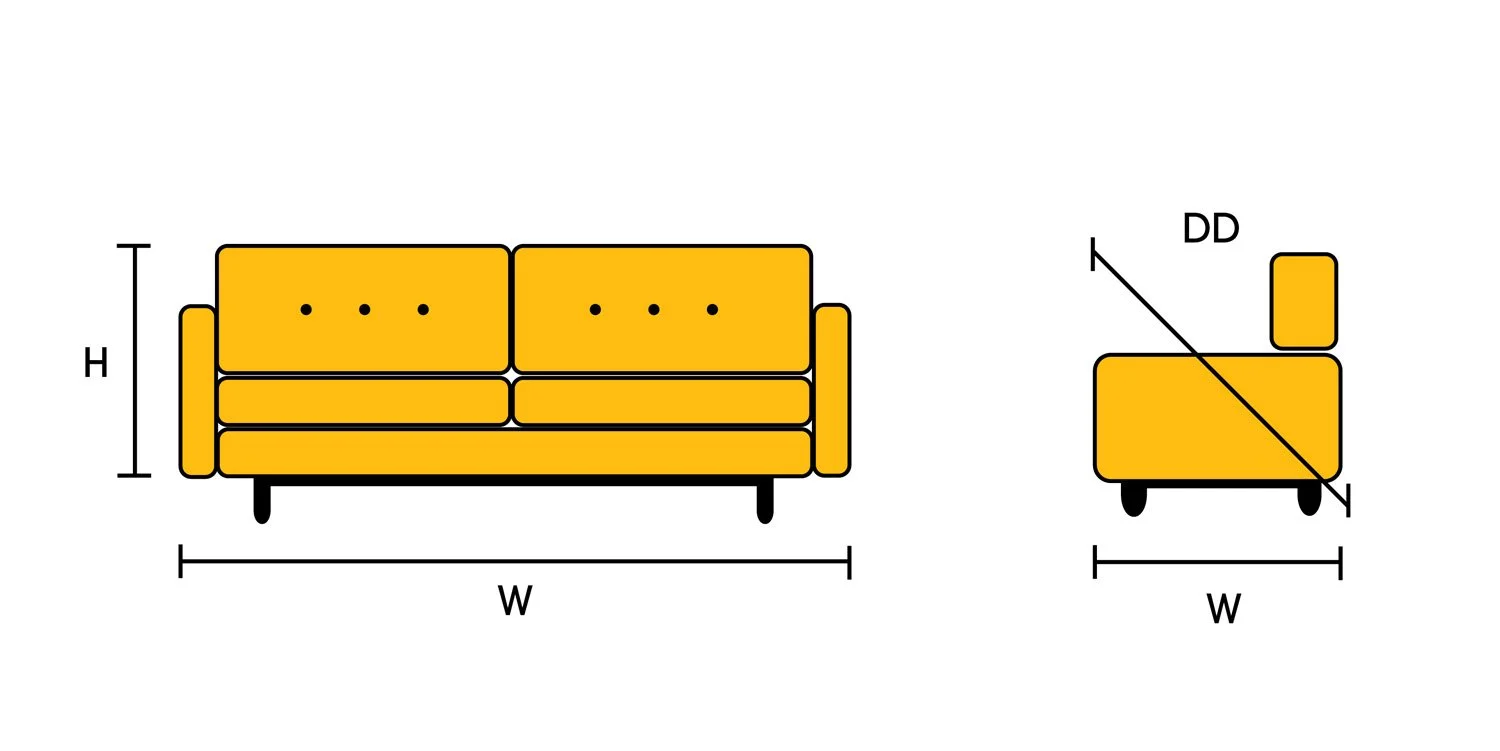How to Measure Furniture for Delivery or Removal
Whether you’re trying to fit the sofa you bought through a tricky doorway, or are trying to remove a heavy armoire without scratching up your walls, pre-measuring is a key step to ensuring your furniture delivery or pickup goes smoothly. These guidelines will help you learn how to measure furniture so you can size up your space and save some frustration.
Take stock of your space
Before you start shopping, map out all of the potential locations for your new furniture and take clear measurements. This will help you find the right piece without overwhelming the room from a size perspective.
Check your placement before you buy
Now that you’ve decided where you want your piece, and have narrowed down your shopping list to a few options, resist the urge to eyeball how each could fit. Instead, grab a roll of painter’s tape and a tape measure, and properly mark out the dimensions of your top contenders on the floor. This will help you visualize the total imprint of the items under consideration to ensure there is ample room on all sides.
For home office furniture, nightstands, dressers, or media centers, you’ll want to make sure you are close enough to power outlets, cable connections, and wi-fi.
Choose your entry point
Once you’ve found the right piece for your room, it’s time to prep for delivery. The same is true of furniture you may be selling. Take the time to walk the path your furniture will take to and from its final destination.
Measure all entryways
Using a tape measure, note the width (W), height (H), and diagonal height (DH) of all hallways your furniture will pass through. Don’t forget to measure the distance through each doorway to the nearest wall so that you’re confident the piece has enough space to make it into the room. Make sure to add an additional 3 inches to your measurements to account for the thickness of the protective blankets we wrap our pieces in.

If your building has an elevator, it’s important to measure not only the width (W) and height (H) but also the depth (D) to ensure your piece will fit.

Don’t forget to consider the location of light fixtures, banisters, and ceilings in your measurements, particularly if your piece will travel on stairwells.

Clear a path
As you walk, take note of details along the way that may prevent entry or exit. This includes everything from handrails, hinges, trim, and immovable fixtures. Remove potential obstacles wherever possible and pay extra attention to nearby valuables such as wall art, heirlooms, and area rugs.
Measure all sides
Some furniture can fit straight through entryways, but other pieces may have to be turned at an angle. Don’t panic — simply grab your measuring tape. Start by measuring each item’s width (W) and height (H).
For sofas and chairs also measure the diagonal depth (DD).

For bookcases, armoires, dressers, and tables, measure the diagonal height (DH) at the widest point, in addition to depth (D).

How to Measure Furniture: Check your measurements
The width and height of each piece of furniture must be less than the width and height of each doorway, hallway, and point-of-passage. For sofas and chairs, the diagonal depth must be less than the width of each entry point. The diagonal height of taller items, such as bookshelves and armoires must be shorter than the height of any point of entry or exit.
This is merely a guide on how to measure. There are many factors that impact furniture delivery and we’re not able to guarantee your furniture purchase will fit. However, should you have questions along the way, we’re here to help.






